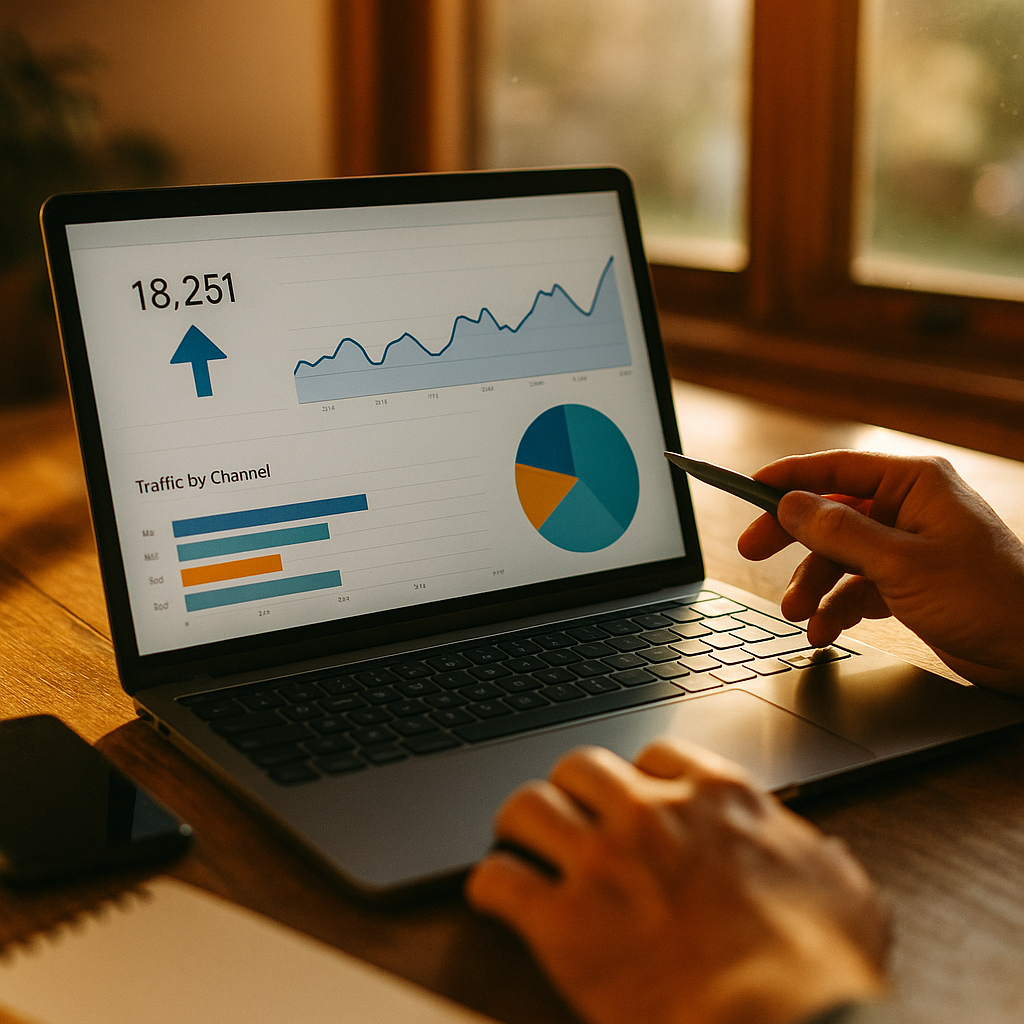Launching an ambitious digital marketing campaign can rapidly boost site visits, but high traffic doesn’t always translate into deep engagement. This post-mortem explores a campaign that drove high traffic but low time-on-site, exposing what went wrong and how to turn future visitors into loyal, engaged users. Discover actionable insights to refine your strategy for lasting website success.
Analyzing Campaign Performance: High Traffic, Low Engagement
Every data-driven marketing strategy aims for more visitors and increased on-site activity. However, the recent campaign resulted in a surge of page views but disappointing engagement metrics: specifically, a below-average time-on-site. Analytics indicated that while sessions spiked by 82%, the average session duration dropped below one minute, raising red flags about user interest and content relevance.
This disparity between quantitative and qualitative outcomes underscores the importance of looking beyond vanity metrics. High visitor numbers are a promising start, but low time-on-site can point to challenges in content quality, user experience, or even traffic sources. Before diagnosing solutions, understanding the interplay of these metrics is vital for digital marketers aiming for sustainable growth in 2025.
Traffic Quality Matters: Beyond the Numbers
Not all website traffic is created equal. In-depth review of campaign sources revealed that the majority of new users arrived via paid social promotions and viral ads, both known for delivering fleeting attention spans. These sources often attract curiosity-driven visitors who might not match your primary audience profile.
As recent research highlights, traffic origin heavily influences on-site actions. According to a 2025 Semrush report, organic search visitors typically spend 30-50% more time on-site than paid ad visitors. This reinforces the necessity to prioritize not only volume, but quality. Evaluating channels, targeting parameters, and campaign messaging ensures you draw visitors who genuinely seek your content.
Content Relevance & UX: Common Reasons for Low Time-on-Site
Digging deeper into website analytics, the most common exit points were landing pages with vague or misleading headlines. Users bounced rapidly, suggesting a disconnect between campaign messaging and actual content. This misalignment is a frequent cause of short sessions and diminished trust.
Moreover, site usability plays an understated yet crucial role. In 2025, user patience is at an all-time low, with Google reporting that over 60% of users leave mobile sites if loading exceeds three seconds. Poor navigation, intrusive pop-ups, and cluttered layouts were also contributing factors observed in this campaign review.
- Irrelevant content: Users expect the landing page to fulfill the promise of the ad or link they clicked.
- Slow load times: Each additional second of delay increases bounce rates.
- Non-intuitive navigation: Complex menus or hidden CTAs hamper deeper site exploration.
- Device incompatibility: With over 75% of users browsing via mobile in 2025, responsive design is mandatory.
Addressing these core UX and content alignment issues is paramount when striving for higher engagement metrics.
Optimizing Landing Pages: Strategies for Engagement
Improving time-on-site starts with purposeful landing page optimization. Here are actionable tactics proven to increase user interaction and retention:
- Enhance Content Relevance: Audit headlines, subheadings, and introductory paragraphs to ensure they directly address users’ search intent and aligns with campaign messaging.
- Speed Up Load Times: Compress images, leverage browser caching, and minimize scripts. According to Google, each second shaved off loading boosts engagement by up to 20%.
- Streamline Calls-to-Action: Place well-labeled, easily visible CTAs above the fold, guiding visitors to further explore.
- Personalize Experiences: Use dynamic content based on referring traffic source or user location to boost relevance.
- Emphasize Clarity and Trust: Add trust badges, clear privacy policies, and customer testimonials for credibility.
These improvements, rooted in recent UX research, not only reduce bounce rates but actively encourage longer, more meaningful sessions.
Segmenting and Retargeting: Turning First Visits into Repeat Engagement
A one-size-fits-all approach rarely works in today’s diverse digital landscape. Segmenting your new visitors based on behavior—such as those with quick bounces versus those exploring multiple pages—enables tailored retargeting strategies. Set up follow-up campaigns that specifically re-engage users who left quickly, offering more targeted content or incentives.
Leveraging AI-driven analytics and CRM integrations in 2025 allows for real-time personalization and segmentation. Tailored email nurturing sequences, dynamic ads promoting high-value content, and push notifications can capture and re-engage lost interest, converting one-off visits into repeat sessions and higher average time-on-site over time.
Measuring Real Success: Setting Holistic KPIs
Solely tracking traffic volumes is a pitfall for modern marketers. To drive sustainable growth, success must be measured using a robust set of KPIs that illuminate both user acquisition and engagement, such as:
- Average session duration
- Pages per session
- Scroll depth
- Return visitor rate
- Conversion rate (newsletter signups, sales, downloads)
Establish actionable benchmarks and review them after each campaign. Combining quantitative data with qualitative feedback—such as heatmaps and on-site surveys—provides a full picture. This approach exemplifies Google’s EEAT principles, leveraging expertise, experience, authority, and trustworthiness for smarter decision-making.
FAQs: High Traffic But Low Time-on-Site
- What causes high website traffic but low time-on-site?
Most often, it’s due to traffic sources delivering unqualified visitors, misaligned content, slow site speeds, or poor user experience. - How can I improve time-on-site without reducing traffic?
Optimize landing pages, ensure clear relevance, personalize experiences, and streamline navigation to keep visitors engaged once they arrive. - Are certain traffic sources more likely to result in low engagement?
Yes, paid ads and viral campaigns can bring users with less intent. Focus on SEO, targeted social content, and referrals for higher engagement. - Which metrics best reflect website engagement?
Average session duration, pages per session, return visitor rate, and conversion rate together give a comprehensive view of true engagement. - Can retargeting help increase time-on-site?
Absolutely. Retargeting recaptures interest, nudging previous visitors to explore more content and spend longer during subsequent visits.
In summary, driving high traffic is only half the battle. Ensuring those visitors stay and interact requires strategic alignment of campaign sources, content, and user experience. Address traffic quality and optimize for engagement at every touchpoint—transforming surface-level success into genuine, lasting website growth.
